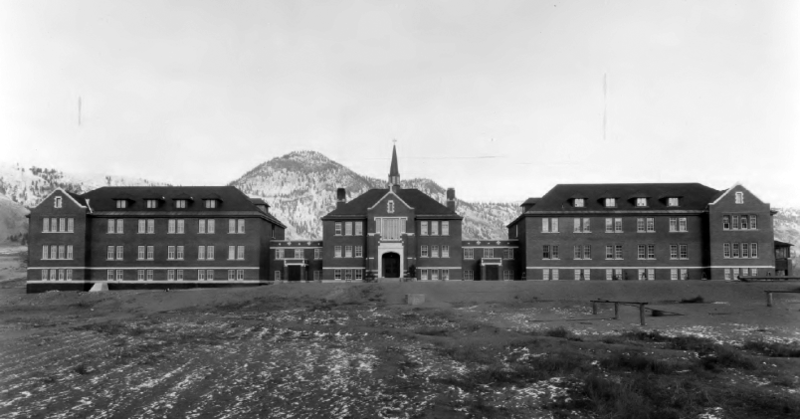When is a hoax, not a hoax? They knew the study revealed ‘anomalies,’ not bodies.
A recent article appeared in the Western Standard admonishing conservatives for using the term “hoax” when referring to the Kamloops claim — namely the MAY 27, 2021 claim — that the remains of 215 former students had been discovered on the grounds of the local residential school.
The author of the article noted that many former residential school students might be offended by the use of the term. I agree with him that innocent people should not be unnecessarily hurt by writers trying to make a point. Everyone agrees that many people were hurt by their residential school experiences. That is no hoax.
However, what the author might not be aware of is the fact that what was claimed at Kamloops was patently false. It was a clear example of misinformation. That May 27, 2021 announcement claimed that the “remains of 215 former students” had been found.
This was false. No such “remains”, “bodies”, “graves”, or “mass graves” had been found.
And none have been found since that claim was first made. Only soil “anomalies”, were detected. “Anomalies” are basically radar signals that could be from rocks, tree roots, or other old excavations that have nothing to do with graves.
Thus, the people who made the claim that the “remains of 215 children had been found” were making a claim they knew was false. Although they have refused to release the ground penetrating radar report made by Sarah Beaulieu, we know with absolute certainty that Beaulieu reported finding only anomalies and not “remains”because Beaulieu said so.
She also said that only excavation would show what those anomalies were. And the people making the claim have refused to do any excavation.
“Anomalies” and “human remains” are two entirely different things. There is no excuse for Kamloops Chief Roseanne Casimir and her colleagues announcing that human remains had been found, when only anomalies, that could be from many different sources, had been detected.
On the basis of this false claim the claimants obtained $8 million from the federal government. That money may or may not have been spent — we don’t know because they won’t tell us.
That false Kamloops claim, and the $320,000,000 the Trudeau government was foolish enough to promise, then inspired copycat claims from other poor indigenous communities. Instead of focusing on their many very real problems, those communities are now engaged in a pointless exercise searching through old cemeteries for evidence of imagined secret burials. That original Kamloops claim has done a lot of harm.
So, the use of the term “hoax” might be offensive to some, but what should we call an application for $8 million from the federal government based on information that the applicants knew to be false? Perhaps there is a more polite term to describe deliberately obtaining money by false pretences.
Maybe “a patently false claim?”
Either term is probably accurate. Just to be clear — the people making this claim knew they had not discovered “remains.”
Despite that, they repeated their misinformation far and wide. And it took three years for those same leaders to formally admit that only “anomalies” — and no remains — were found.
While it is entirely possible that many, or even most, of the people in that Kamloops community believed, and still mistakenly believe, that the remains of 215 children had been found, the point is that the leaders who made that claim knew with absolute certainty when making the claim that only “anomalies” and no remains, bodies, or graves, were found. They used that false information to fool government officials into giving them $8 million in tax dollars.
Whether that is a “hoax” or a “patently false claim” I don’t know. But it is certainly one or the other.
Readers wanting to take a deep dive into the false Kamloops claim and its ramifications might want to read “Grave Error — How the Media Misled us” edited by Tom Flanagan and Chris Champion. Disclosure: I am a contributor to the book.)
So, if the point of the author is to stress the need to avoid unnecessarily offending innocent people who had a rough time at residential school, I completely agree with him.
However, if the suggestion is that the people who are responsible for making a false claim — a claim has cost this country billions of dollars, a humiliating downgrading of our international reputation, and internal division for decades to come, I do not.
The people responsible for creating this national and international mess should be held to account. We shouldn’t care a whit if they are offended by any particular term we use to describe their dishonest behaviour.
Those people responsible for keeping the “hoax”, or “patently false claim” alive are both indigenous and non-indigenous. They include not only the senior indigenous leadership, but senior non-indigenous leaders, like Justin Trudeau and Marc Miller. They include incompetent journalists . They also include a spineless RCMP leadership that has failed completely in its responsibility to investigate and report to the Canadian public.
As for those people the author refers to who are suffering from their residential school experiences, surely it can’t be helpful for their leaders to promote baseless stories about murderous priests secretly burying 215 indigenous children? Surely such wild stories — stories that have no credible evidence to support them — can only inflame their feelings of victimhood, fomenting church-burning rage among the less sophisticated. indigenous people? They deserve better than that from their leaders.
All Canadians deserve better from our elected leaders.
If the people responsible for obtaining $8 million from taxpayers on the basis of this false claim find themselves in a courtroom it will be up to the presiding judge to choose the appropriate terms to describe their behaviour. The court might use the term “hoax”, “a patently false claim” or perhaps a different term entirely. The important thing is that the opportunists who made these false claims be held accountable for their behaviour.
But those responsible for perpetuating the false Kamloops claim — whatever it is called — should not wait for a court date. They should immediately apologize to all Canadians, but particularly to their own community members whom they misled.
They should also apologize to the people they have falsely accused of horrible crimes — namely the many priests, nuns and teachers, indigenous and non-indigenous, who worked at residential schools, and did their best to provide educations to the indigenous children who needed them.
And a defence lawyer would also probably advise them to begin to work on a restitution plan that would repay the $8,000,000 of taxpayer dollars that they obtained under false pretences.
Brian Giesbrecht, retired judge, is a Senior Fellow at the Frontier Centre for Public Policy



